Alternative births: Why these mums chose a VERY different way to welcome their babies
From delayed cord clamping to mother assisted caesareans, Milli Hill looks at the latest trends
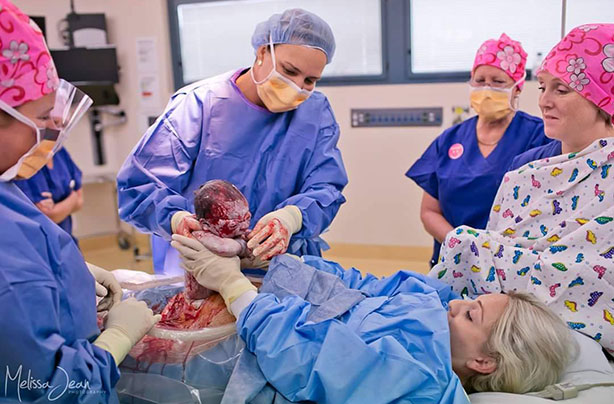
Giving birth: it's always been the same, but the options now available are always changing.
From delivering your caesarean baby with your own hands, to leaving the umbilical cord to do its own thing, Milli Hill checks in with some of the latest trends in the birth room.
1. The 'Gentle', 'Slow', 'Natural' or 'Woman Centred' Caesarean
It's easy to think that if you need to have your baby in the operating theatre, you have to let go of any hope of being involved in the birth at all. In fact, many women report feeling disappointed after a caesarean because they feel that birth was something that was 'done to them', rather than something they actively did themselves.
But a new kind of caesarean helps address these feelings, by giving back some control and choice to the parents, and at the same time acknowledging the moment of birth as a hugely important and special time.
In a Gentle Caesarean, one or more of the following choices are observed:
- The room is kept calm and quiet, there is no 'chit chat' and the atmosphere is respectful
- Music of the parents choice can be played
- The screen is lowered during the birth or immediately after so that mum and partner can watch the baby being born
- The baby is born more slowly, mimicking the way fluid is squeezed from the lungs in the process of vaginal birth
- The parents can discover the sex of the baby themselves rather than it being announced
- There is a delay in cord clamping
- The ECG dots are attached to mum's back so that she can have skin to skin contact immediately with baby
- The IV line is placed in mum's non-dominant hand so that it is easier for her to touch and caress baby
If you want a Gentle Caesarean, you will usually have to ask, as at the moment they are not 'standard procedure'. Rachel James, from Cambridge, had a gentle section when her second baby, Alex, was born in 2013:
'I was prepped, the operation began and once the screen was lowered the doctor eased my baby boy's head out. We were transfixed. The room was completely silent, no-one touched him. He looked around, moved his eyes, then slowly his body emerged from my abdomen.
Photo: Rachel Strange
Rachel after her gentle caesarean
'It was truly magical to watch. He was lifted from my body straight onto my bare skin. Throughout the rest of the operation I stroked his silky skin; he rooted around, cried a little, I kissed him and held him constantly. It was so gentle and respectful, we were in tears.'
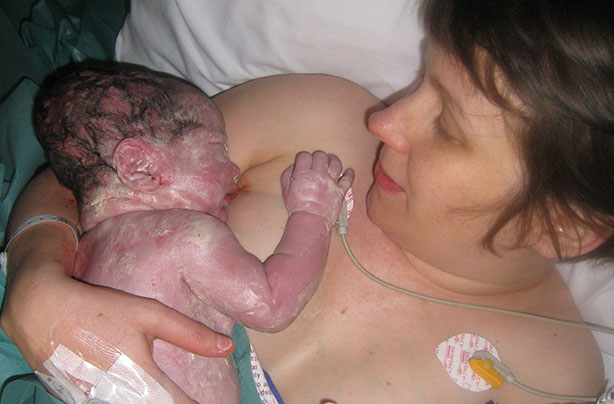
2. The MAC: Mother Assisted Caesarean
Mother Assisted Caesarean, which seems to most often take place in Australia, was created for the same reason as the Gentle Caesarean: birth matters, and women want to be as involved as possible when their child comes into the world.
MAC takes many of the elements of a Gentle Caesarean, but the mother – who scrubs in with the surgeons and is double-gloved for sterility - is allowed to reach down and, with her own hands, bring her baby out of her body and up to her chest for skin to skin.
GoodtoKnow Newsletter
Parenting advice, hot topics, best buys and family finance tips delivered straight to your inbox.
Heidi Henderson had a MAC at the Sunshine Coast Private Hospital in Queensland when her baby Lottie was born earlier this year:
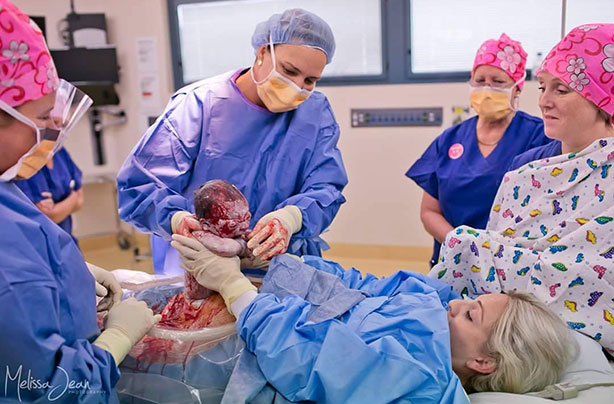
Photo: Melissa Jean Photography
Heidi assisting at the caesarean birth of her daughter Lottie
'Surprisingly the whole process didn't make me "squeamish" at all - although my husband wasn't overly keen to watch! It was pretty special – unlike other caesareans where the midwife takes your baby straight away and wraps them, being able to pull out my baby and bring her straight onto my chest for skin to skin was an experience I'll never forget.'
3. Vaginal Seeding or Seeding the Microbiome
A bit of background: the Microbiome is the colony of bacteria that live on us and inside us, and scientists are now discovering the many ways it plays a vital role in our physical and even our mental health. It's an emerging field, and there's a lot we don't understand – yet. What we do know is that the Microbiome begins to be 'seeded' at birth (think of it like a big rainforest of various species), and that vaginally born babies, exposed to bacteria in the birth canal, have a much more diverse microbiome than those born via caeasarean.
Working with the theory that this lack of diversity may impact their child's future health, some parents are choosing 'Seeding': placing a gauze in the vagina an hour or so before caesarean, and swabbing the baby with the gauze shortly after the birth. Some do this with the help of a midwife, others just 'DIY'.
Frederique Rattue from London 'seeded' her son Diego's microbiome when he was born in London in 2015 and was one of the very first people to adopt this procedure. 'My other children had been born vaginally so I wanted Diego to have the same advantages. I saw the film "Microbirth" and read about studies into microbiome seeding at the NYU school of medicine.

Frederique at the birth of Diego, where she 'seeded' his microbiome
'I could not see any reason not to try this procedure, and with the help and support of my midwife and doctors, I had a woman centred caesarean, after which we used a gauze, colonised with my vaginal bacteria, to 'seed the microbiome.'
4. Optimal or Delayed Cord Clamping
It's wrong to call delayed cord clamping a 'trend' really; we now know that waiting until all of the blood from the placenta has gone, via the uncut cord, to the baby, is the most healthy start in life we can give them. In fact, it's cutting the baby's cord just seconds after the birth that will soon be viewed as a pretty ignorant blip in human history.
Amanda Burleigh, a midwife from Leeds who has campaigned for a decade for all babies to receive Optimal Cord Clamping, says that the practice is still not widespread enough:
'Presently many babies are still suffering immediate cord clamping despite there being no evidence to support it whatsoever. This has to change, the evidence for the benefits of delaying cord clamping is just too strong to ignore.'
Laura Willshaw, from Leeds, waited for about half an hour before clamping the cord when her baby Halle was born at home in 2013:
'When pregnant I read an article published by Amanda Burleigh about all babies needing their own blood. I'd always thought of it as cord blood, but it's obviously the baby's blood! I learnt that one third of their blood isn't in them at birth, but by waiting until the cord looks white, this blood transfers to them, and all the studies done so far show benefits.'
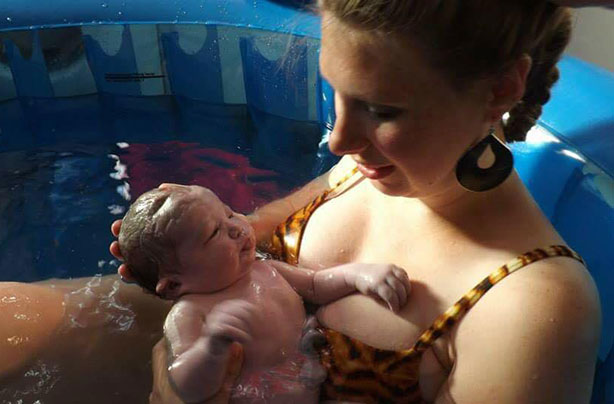
Laura waited for half an hour to cut the cord at the birth of baby Halle
5. Lotus Birth
Taking optimal clamping a step further, some parents are deciding not to cut the cord at all, but to have a 'lotus birth', where baby and placenta are left attached to each other until the cord dries up and naturally falls away. The process takes around four days, during which time the parents do not welcome any visitors and the placenta, carried along with the baby, is packed in herbs and salt.
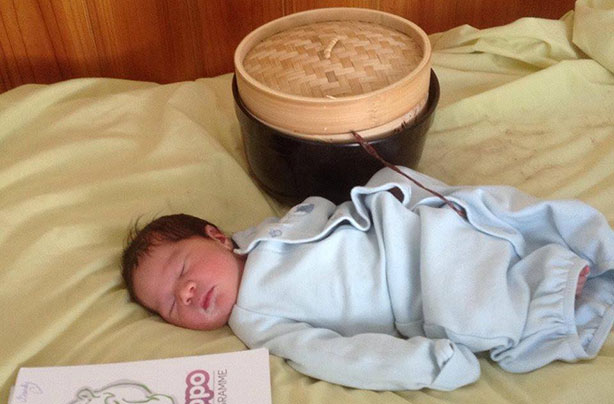
Baby Hannah, who had a lotus birth in Melbourne
'People choose Lotus Birth for physical, emotional and spiritual reasons', explains Tamara Cianfini, a doula and co-founder of the Wise Hippo birthing programme. 'Lotus Birth means everything is done slowly and calmly, and in it's own time, and many couples appreciate this gentle start in life and the quiet bonding time that it provides.'
Trusted, informative, and empathetic – GoodToKnow is the ultimate online destination for parents. At GoodtoKnow, our mission is 'simple': we're trying to make sense of parenthood. On the site, you'll find everything you need for a happy, healthy family life. Our huge archive of content includes more than 18,000 articles and 1,500 how-to videos. These include expert-backed advice features on parenting, dealing with relationship changes after having a baby, self-care for mums and managing your family finances. We also feature tried-and-tested product reviews and buying recommendations for every stage of family life - from prams and Moses baskets to birthday gifts and top toys.